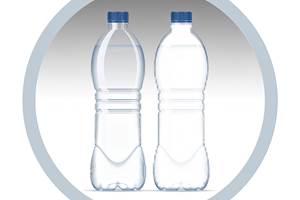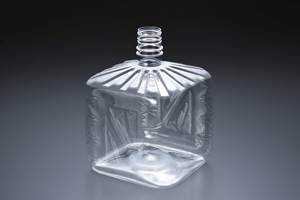Speed to Market: Pretium Stays Light on Its Feet And Ahead of the Pack
A visit to its largest PET plant illustrates how this versatile blow molder leverages design skills, a can-do attitude, and a high degree of production flexibility to supply custom products in ever-shorter time windows. A new thrust into automation will help pick up the pace.
The field of container blow molding has a handful of corporate giants, but it also includes dozens of small to medium-sized operations, privately held and mainly regional in focus. For the past 23 years, Pretium Packaging has been assembling a network of such operations in diverse markets and geographies to accomplish what they couldn’t individually while retaining their strengths in close customer relations and agility to react to quick turns in the market.
“We are very much like 12 regional companies going to market and dealing with customers on a national basis,” says Pretium CEO George Abd. “There’s no one just like us. Unlike smaller competitors, we can make the same product at multiple locations —a real advantage that lets us focus on speed and turnaround. Our top 20 customers are supplied from more than one of our plants, some of them from as many as seven or eight plants.”
Abd sees Pretium as having no direct competition—apart from those individual regional plants that don’t share its national scale. “Our niche is small to medium volume—200,000 to 25 million units a year of a particular product. An average piece of business for us is around $250,000 or 1-2 million units a year. We don’t really compete with the biggest players, which focus on much higher volumes, sometimes 500 million to a billion units a year. We do have Fortune 100 companies as customers, but we service their smaller-volume applications.”
SCALING UP NATIONALLY
Abd joined Pretium in 2008 after 11 years in the compounding business at Polycom Huntsman and nine years at Spartech, which acquired his former employer and supplied not only compounds but sheet, packaging, and other products. In his last two years at Spartech, Abd served as president and CEO.
Pretium, based in Chesterfield, Mo., was founded under a different name in 1992. Eight years later, it had acquired nine other molders to add scale and geographic breadth. After a decade’s pause in that campaign, Pretium acquired Novapak
Inc. in 2010; Tri-Delta Plastics in Hillsborough, N.J., late last year; and Intertech Corp., Greensboro, N.C., early this year. “Intertech gave us additional presence in the Southeast, and Tri-Delta got us into the spice-container market, where they are a leader,” notes Abd.
Pretium itself was acquired last year by Genstar Capital, a San Francisco-based, middle-market private-equity firm with over $5 billion in capital and assets.
Pretium today is a roughly $300 million business with 1130 employees, 12 plant locations from coast to coast, and more than 330 bottle production lines. “We have a very broad offering, with every type of blow molding technology,” says Abd. That encompasses shuttle, wheel, and reciprocating-screw extrusion; injection-blow; and both one- and two-stage PET stretch-blow molding (SBM).
Pretium also has eight Husky injection machines molding PET preforms in Paris, Ill., and plans to buy two more. Most of those preforms are used internally at its four plants running two-step SBM machines. Pretium also has 13 injection presses dedicated to a small closures business, expanded recently by the Tri-Delta acquisition. “I could see buying a standalone business for custom closures at some point to broaden our product offering,” Abd comments.
PET bottles comprise 60% of Pretium’s business, the remainder being mainly PE and PP. Abd adds, “We also do a little PVC for packaging aggressive chemicals and automotive cleaning products.” Food packaging is Pretium’s biggest market, close to half its business. Household and industrial chemicals account for another 25%, while healthcare, pharmaceuticals, and personal care together amount to nearly 20%. All others amount to 8% of revenue. That includes a “small but important part of our business” in technical blow molding, such as printer toner cartridges, automotive fluid reservoirs, medical feeding bottles, and double-wall cases. “It’s another competitive advantage we can offer our customers,” says Abd.
“Overall, we’re more involved in custom bottles than stock,” says Abd. “For us, a ‘stock’ bottle is one we created for a customer and we own the rights to the design, so we can use it for others if the occasion arises.”
Pretium also offers a variety of secondary operations—in-mold labeling, shrink sleeving, silk screening, dry-offset printing, and heat-transfer decorating. More unusual, Pretium operates the only facility for inline fluorination in the U.S. (there’s another company offering it in Canada). Fluorination during blow molding adds a permanent chemical barrier—used for industrial and agricultural chemicals, cleaners, and automotive fluids, among others—without the reheating needed for post-fluorination, a secondary operation that adds cost and can cause distortion or dimensional changes.
“Another strength for us,” says Abd, is our constant focus on innovation in design.” Pretium employs seven design engineers at various locations. “We have created some unusual designs for special applications, and customers are always pushing for weight reduction to cut cost and source reduction to enhance sustainability—both of which require design skill.”
PRETIUM’S LARGEST PET PLANT
Pretium’s overall strengths cited by Abd are amply evident at its largest plant, in terms of revenue, located in Hazleton, Pa. The 120,000 ft2 facility, formerly known as Pocono PET, joined Pretium in 1998. With 150 employees, it is also Pretium’s largest PET molding plant, operating 26 stretch-blow systems—eight Sidel two- and four-cavity reheat machines and18 one-step Nissei ASB presses. The facility has been adding a new line each year on average; another one-step machine is expected this year and one more next year.
The plant is dedicated entirely to PET, using 2.5 million lb a month, which comes in by rail to two silos. Production is about 75% stock (designs owned by Pretium) and 25% custom. About 75% of its $50 million sales come from food and specialty beverages. Household chemicals (trigger sprayers) are second in volume, followed by pharmaceuticals, nutritional supplements, personal care, and agricultural chemicals. Hazleton molds everything from bottles for syrups, vinegar, sauces, oils, salad dressings, and mouthwash to jars for honey, nuts, pickles, and peanut butter. It also molds large barrel-like containers of up to 12L for seasonal candies, pretzels, and other snack foods. The plant’s biggest seller in dollars is 73 oz (2.3 qt), but the biggest in unit shipments are a 1L for cocktail mixes and 22-oz trigger sprayers (both stock).
Tom Ensley, the plant’s director of manufacturing, has spent his entire 25-year career in plastics, at blow molders Graham Packaging and Captive Plastics, and at color compounder PMC Group. He joined the Hazleton team over four years ago. This was Pretium’s first one-step PET facility, and Ensley says, “It’s the best plant I ever worked in for that process. The staff is very talented. They are very good at changeovers, which are very well organized. After setup, they audit the setup and the first-run bottles.”
They have to be good at changeovers, because the plant does a lot of them—at least five a day, typically three for Sidels and two for Nissei ASBs. Time for changing molds on both types of systems has been whittled down to as little as 45 min, and Ensley says a full Nissei changeover, including hot runner, can be 8 hr “bottle to bottle.”
Quick tooling changes are in sync with the plant’s (and Pretium’s) focus on “speed to market” and “customer first,” as Ensley puts it. “I’ll run one truckload of bottles for you. Not many others will do that.”
Adds Dan Dauley, master scheduler, “We do a lot of single-pallet shipments. In the last five years, the supply chain has changed. We used to ship truckloads of a single product. But today it’s three pallets of “A,” four pallets of “B,” and five pallets of “C” on one truck. Another thing: Lots of customers now want product packed in a certain way. We’re happy to accommodate, but the big-volume blow molders generally won’t customize that way.”
Pointing out an orange Halloween “pumpkin” snack jar, Ensley notes, “We’re happy with seasonal business, 400,000 to 600,000 units. Others don’t like that ‘here today, gone tomorrow’ aspect.”
Hazleton has 170 different customers and 400 ship-to locations. Although Pretium has a central customer-service department in Chesterfield, Mo., both Ensley and Dauley provide a good deal of their own. “I’ll just call up a key customer and ask, ‘What’s up? Anything I can help you with?’ Recently a customer said a bottle he had been buying from us was running at a slower rate on a new filler unit. I said, ‘Let me come over and see how it’s running. Maybe we need a different weight distribution in the bottle to run better on your filler.”
That’s an example of how even the plant’s stock containers can have a custom aspect. “We use the same stock mold for different customers,” says Ensley, “but some of them might want the bottle a little heavier here or lighter there, so we tweak the process to change the material distribution.”
Adds Dauley, “The biggest feather in our cap in the last five years was taking stock bottles and adding color to them to give them new life.” He cites tinted jars for nutritional supplements as an example.
The Hazleton plant runs a lot of colored PET and some products requiring UV inhibitor or oxygen scavenger. Both additives are provided via masterbatch that is side-fed into the injection barrel of the Nissei ASB machines. Ensley recalls a 5.7 L home draft beer keg tas an example. “At the time, we were the only ones that could do it,” Ensley claims, based at least in part on the ability to meet strict specs on color control and holding a tight process window on the unique product design.
Hazleton takes pride in its ability to make special products. One example is a 73-oz octagonal jar with rounded shoulders, which holds 2 lb of chocolates. Another is a Halloween “pumpkin” jar for snack food. It’s the biggest jar made at Hazleton: 12.2 L with a 155 mm neck finish. To make the snap-on lid easier to remove, Pretium’s designers added a feature in the projecting ring on the jar’s neck to allow for a good finger grip on the underside of the cap.
Another example of innovation is a tall pouring container for granulated sugar. Pretium, working closely with the customer’s development team, designed a slanting script logo into the bottle sidewall and engineered a unique egg-shaped neck to make pouring easier without spillage. “No one else was able to do that,” claims Ensley, because it is very difficult to keep the asymmetrical opening consistent. Pretium’s and the customer’s designers also created a flip-up lid for the sugar bottle, though it is being molded for Hazleton by an outside vendor.
One ongoing initiative for the designers is lightweighting. One large jar started at 270 g and was trimmed to 235 g. A very high- volume jar was lightened up by 8%. And a large snack-food barrel saw a 16% reduction from 220 g to 185 g, with ribs added for strength. Hazleton technical director Ray Eble likes to call this “the lightest snack-food container of its size on the planet.”
Three of Pretium’s seven design engineers are dedicated to Hazleton. There are two SolidWorks CAD stations at the 30,000 ft2 R&D center and warehouse located a mile and a half from the Hazelton plant in a former Novapak facility. A third CAD designer is located in New Jersey.
The R&D center also has a Stratasys FDM-type 3D printer to make prototypes. It typically runs four new models a week.
While Hazleton pulls out the stops to give each customer what it wants, the other key requirement is to do it fast. Recalls Dauley, “We had a 200,000-unit order for a large PET barrel. The tooling was built and qualified in six weeks. If I have an existing preform in our extensive “library” that I can use, I can get an order of a new design to you in four weeks.”
Ensley likes to repeat a phrase: “It’s not that it’s hard—it just has to be fast. The customer wants it tomorrow, not two weeks from now. Whoever can do that will get added sales. But you must have capacity and be able to react. In one case, we quadrupled the volume of a product in less than two weeks, from 100,000 to 400,000 units. We needed to get extra tooling, but we were able to use some spare components we had on hand.”
That plays into one of Pretium’s special strengths, Ensley notes: “Fortunately, we have the same machines at multiple locations. It’s good from a contingency standpoint, because we can move tools around.” For example, when a customer for a grated-cheese jar found itself oversold, Pretium was able to run it at two plants—in Hazleton and in Hillsborough, N.J.—to get the order filled on time.
BRING ON THE ROBOTS
The Hazleton plant is upping its game in both productivity and quality with a new thrust toward automation. Ensley is especially proud of a new six-axis Kuka robot that replaces two packers by palletizing jars from two one-step SBM machines. He also points to a conveyor system that takes output from a Sidel reheat machine and performs 100% leak detection and metal detection. Ensley says these are only first steps toward applying automation throughout the plant.
Hazleton’s quality lab includes an Olympus Magna Mike gauge for measuring wall-thickness distribution and other devices for vacuum leak testing, top-load testing, resin moisture analysis, and measuring overall bottle height and volume (“overflow” testing). There’s also a hot-wire cutter for taking cross-sections of preforms.
BIG FIRM WITH SMALL-BUSINESS FEEL
Ensley likes the fact that although Pretium is one of the nation’s top 10 blow molders in overall size, its individual operations retain an entrepreneurial feel. “At Pretium, we treat the plant like it’s our own business. We own our business. I own the production, quality, sales, and marketing for Hazleton.”
The advantages of being part of a larger corporation include the financial resources to expand capacity as needed and invest in automation. There are also advantages in being able to share expertise among the different plants. Ensley travels to other PET plants to provide advice and assistance. He also participates in corporate get-togethers of all the plant managers two or three times a year. For the next meeting, he’ll likely make a presentation on Hazleton’s automation project and its methods of developing special bottles for challenging applications.
Related Content
Krones Acquires Netstal
Krones adds PET preform injection molding to its bottle blowing and filling capabilities, as well as cap molding and expansion into medical, food and other markets.
Read More50 Years of Headlines … Almost
I was lucky to get an early look at many of the past half-century’s exciting developments in plastics. Here’s a selection.
Read MoreMold Opaque White PET Bottles – Without Pigment
Trexel and Husky are cooperating on molding recyclable opaque white preforms for PET bottles, which provide a light barrier using foam instead of pigment.
Read MoreModified Machines to Mold Unusual PET & PP Bottles at K 2022
K 2022 visitors looking for new ideas in stretch-blown containers will be treated to two novel collapsible concepts a the Nissei ASB booth.
Read MoreRead Next
Why (and What) You Need to Dry
Other than polyolefins, almost every other polymer exhibits some level of polarity and therefore can absorb a certain amount of moisture from the atmosphere. Here’s a look at some of these materials, and what needs to be done to dry them.
Read MoreProcessor Turns to AI to Help Keep Machines Humming
At captive processor McConkey, a new generation of artificial intelligence models, highlighted by ChatGPT, is helping it wade through the shortage of skilled labor and keep its production lines churning out good parts.
Read MoreTroubleshooting Screw and Barrel Wear in Extrusion
Extruder screws and barrels will wear over time. If you are seeing a reduction in specific rate and higher discharge temperatures, wear is the likely culprit.
Read More

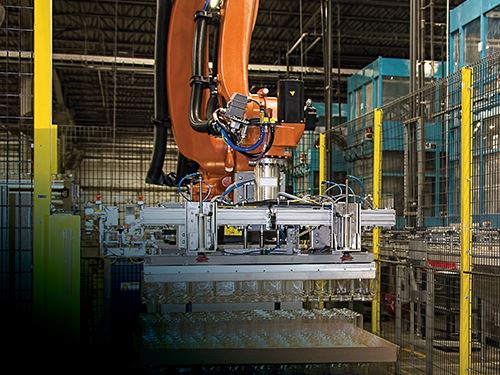
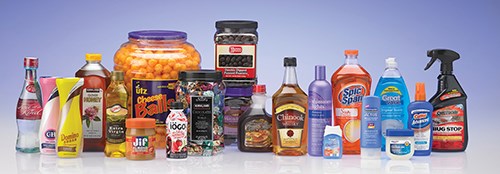

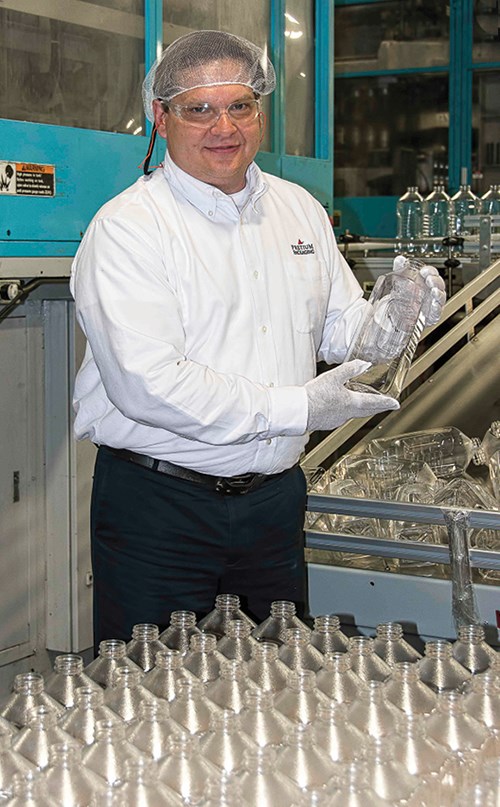
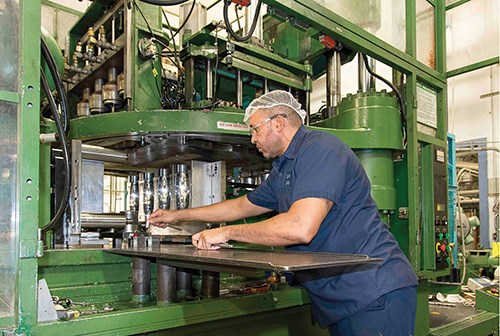

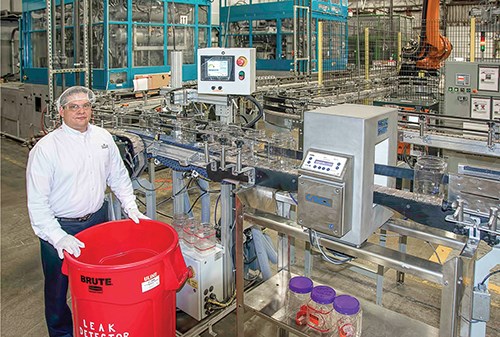
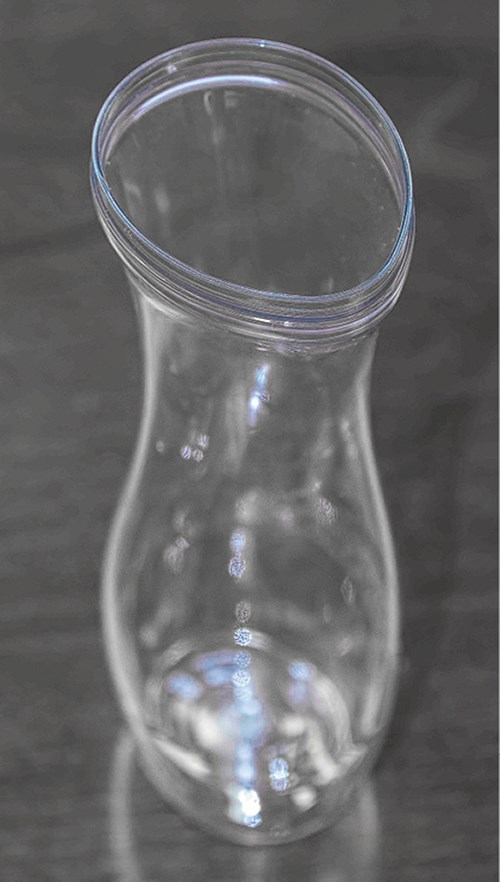
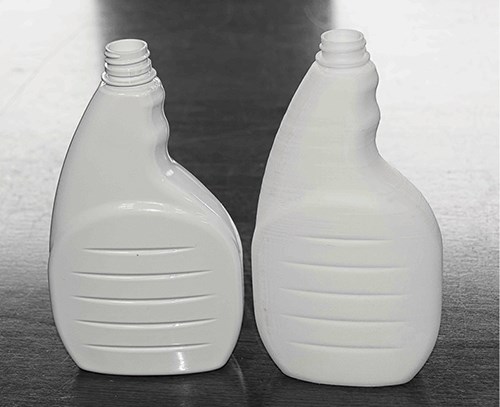
















.png;maxWidth=300;quality=90)







